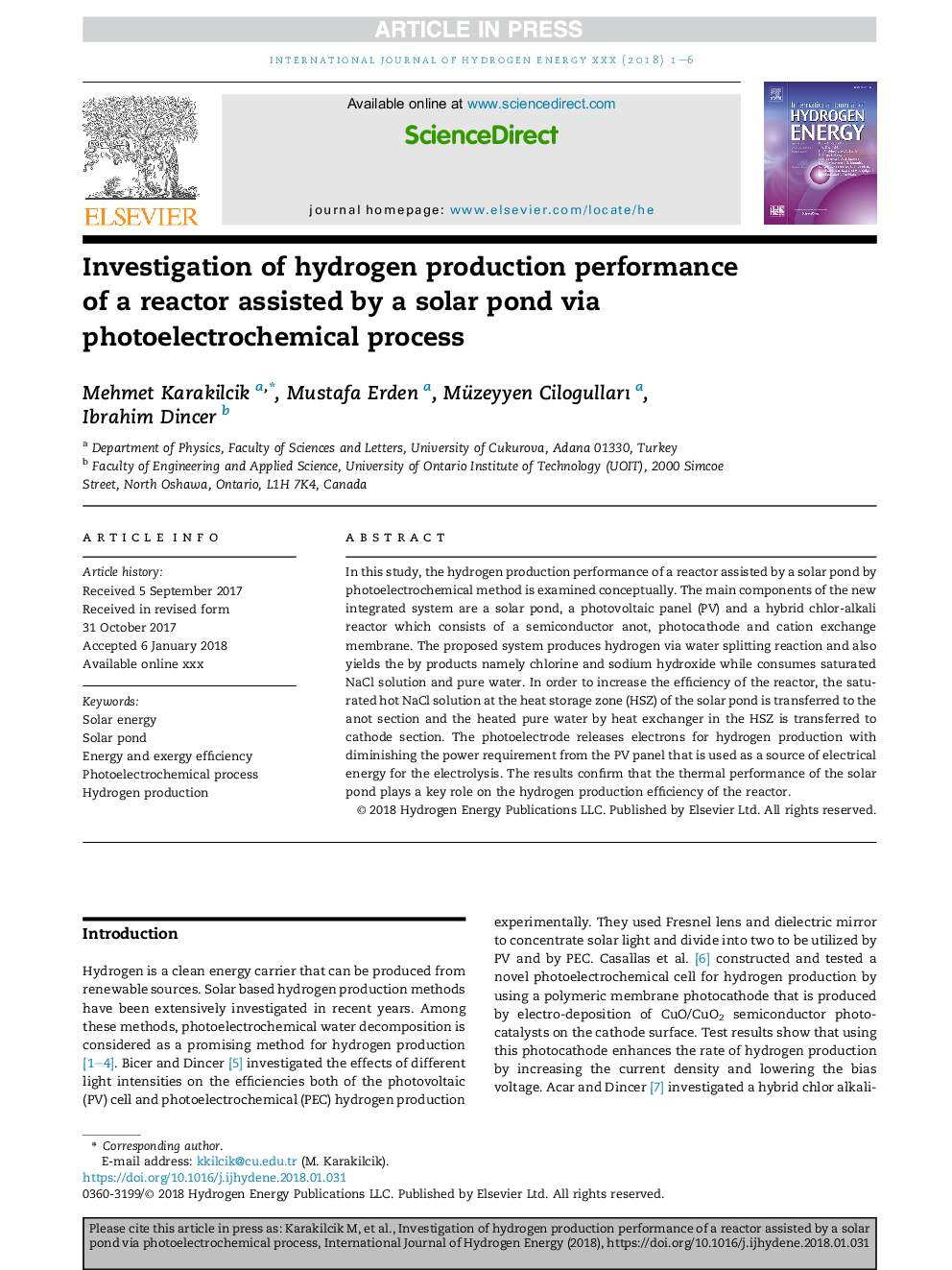| Article ID | Journal | Published Year | Pages | File Type |
|---|---|---|---|---|
| 7705804 | International Journal of Hydrogen Energy | 2018 | 6 Pages |
Abstract
In this study, the hydrogen production performance of a reactor assisted by a solar pond by photoelectrochemical method is examined conceptually. The main components of the new integrated system are a solar pond, a photovoltaic panel (PV) and a hybrid chlor-alkali reactor which consists of a semiconductor anot, photocathode and cation exchange membrane. The proposed system produces hydrogen via water splitting reaction and also yields the by products namely chlorine and sodium hydroxide while consumes saturated NaCl solution and pure water. In order to increase the efficiency of the reactor, the saturated hot NaCl solution at the heat storage zone (HSZ) of the solar pond is transferred to the anot section and the heated pure water by heat exchanger in the HSZ is transferred to cathode section. The photoelectrode releases electrons for hydrogen production with diminishing the power requirement from the PV panel that is used as a source of electrical energy for the electrolysis. The results confirm that the thermal performance of the solar pond plays a key role on the hydrogen production efficiency of the reactor.
Keywords
Related Topics
Physical Sciences and Engineering
Chemistry
Electrochemistry
Authors
Mehmet Karakilcik, Mustafa Erden, Müzeyyen Cilogulları, Ibrahim Dincer,
